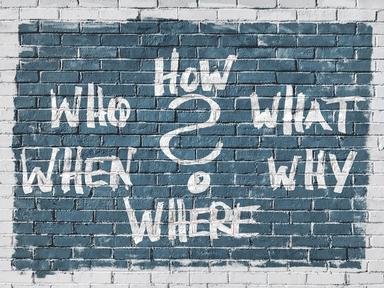Quiz Answer Key and Fun Facts
1. A form of transport to get you around Australia
2. Mr Pacino is miles away in another city
3. A manta that is no longer
4. The lock-opener seems a bit gloomy and depressed
5. The lavatory at the animal park
6. Spot a mistake
7. Burn the director of "Crouching Tiger, Hidden Dragon"
8. The bit of paper you fill in so you can study for your degree
9. Where the venison is
10. When you're back after your holiday and start to see your pale skin return over time
Source: Author
eburge
This quiz was reviewed by FunTrivia editor
looney_tunes before going online.
Any errors found in FunTrivia content are routinely corrected through our feedback system.
